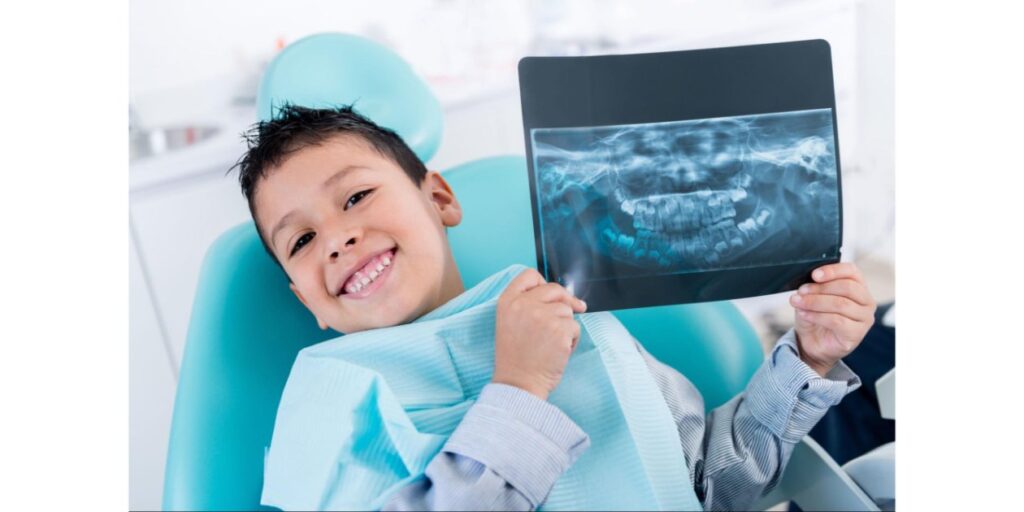Taking care of your child comes with a lot of different responsibilities. From getting them to their first day of school to teaching them the importance of caring for their health, you have a lot to consider – but when it comes to their smile, the team at Eastern Virginia Orthodontics is here to help make your decisions easier. Starting early is the best way to give your child a head start on a straight smile, so keep reading to learn how we can help fix your child’s bite pattern with early orthodontic treatment and the steps you can take to get started.
Bad Bites: Here’s What to Watch for
As children get older, their jaws naturally develop along with them. In an ideal world, the jaw structure would grow to support all of their baby teeth – and, in the future, their adult teeth – without affecting their bite pattern or causing problems like crowding or spacing. Unfortunately, this is not always the case – but it is common.
This is in part because many kids rely on early childhood habits like thumb-sucking or pacifier use to calm themselves down, which can disrupt the natural development of their mouths and lead to complications for their smiles. In other cases, genetics or even poor oral hygiene can also play a role in how your child’s mouth develops, leading to common issues like misalignment and spacing at best or gum disease and tooth decay at worst.
No matter the cause, there are several conditions that you should be on the lookout for as your child gets older so you can get them the headstart they need on orthodontic treatment if it becomes necessary.
Overbites
As one of the most common forms of malocclusion, or bite pattern, overbites can be identified by the excessive overlapping of the upper teeth over the lower teeth. Overbites can affect your child’s facial symmetry as well as their ability to speak or chew and can even cause pain in some cases.
Underbites
Somewhat the opposite of an overbite, underbites occur when the bottom teeth protrude in front of the upper teeth. Similar to other malocclusions, underbites can cause difficulty chewing and speaking, jaw pain, and self-esteem issues.
Crossbites
When some of your child’s upper teeth sit inside the lower teeth, your child might have a malocclusion known as a crossbite. This bite pattern can affect the anterior (front) teeth or the posterior (back) teeth and can lead to issues like uneven tooth wear, jaw strain, or facial asymmetry.
Open Bites
If your child’s upper and lower teeth do not meet in the middle when the mouth is closed, they may have an open bite. This form of malocclusion could cause speech problems, chewing difficulties, and aesthetic concerns.
Other Bite Concerns
Additional orthodontic problems like crowding, spacing, or discrepancies in jaw size can also impact your child’s jaw growth and development. If your child expresses concerns about jaw pain, difficulty chewing, or problems with speech, it’s a good idea to bring them in to see an orthodontist to decide whether or not early treatment could alleviate these issues and give them a head start on a straight smile.
Early Orthodontic Treatment
According to the American Association of Orthodontists, every child should have their first orthodontic appointment by the time they turn seven. This allows our team to assess their developmental condition, decide if an early round of treatment is necessary for their smile, and move forward in the most efficient way possible.
Most children won’t need early orthodontic care, but for those that do, we’ll start what’s known as two-phase treatment.
Phase I
Phase I treatment can begin as early as age seven and works best when your child’s baby teeth are still present. If your child requires Phase I treatment, our team will design a tailored treatment plan to fit their needs. Most patients undergo Phase I treatment for six to twelve months, but this timeline could vary depending on their orthodontic condition.
Retention
After Phase I treatment is complete, your child will enter a resting phase called retention. During this time, they’ll wear a retainer to maintain the results achieved during Phase I treatment. This resting period gives your child’s permanent teeth a chance to grow in.
During this time, they’ll also meet with Dr. Peluso or Dr. Savage every six to twelve months so that our team can monitor their progress and decide when and if Phase II treatment should begin.
Phase II
Once Phase I and the retention phase are complete, you should already see progress in your child’s smile. For some children, Phase I treatment is all they need for their permanent teeth to grow correctly, but most children require Phase II treatment for the best results. That is because Phase II rounds out Two-Phase treatment, honing the results achieved by Phase I and putting the finishing touches on your child’s smile.
In general, Phase II treatment looks much more like the traditional treatment you see during the teenage years. Typically, our doctors apply metal braces to the top and bottom teeth. However, clear aligners may also be an option for your child’s Phase II treatment plan.
Give Your Child a Head Start On a Straight Smile
Orthodontic treatment comes in many shapes and sizes, and at Eastern Virginia Orthodontics, we are proud to offer services for all kinds of orthodontic needs. Whether your child needs Two-Phase treatment or you need a touch-up as an adult, we’re here to make your dream smile come true.
Schedule your child’s free consultation appointment at one of our locations in Chesapeake, Norfolk, or Virginia Beach and get started today!
 Free Consult
Free Consult


